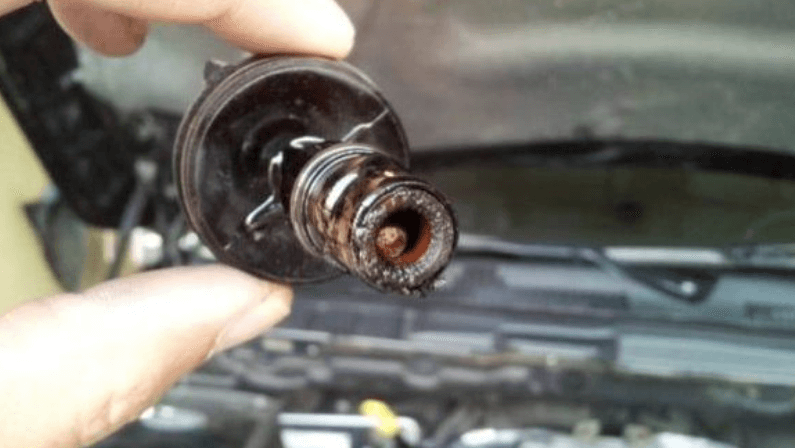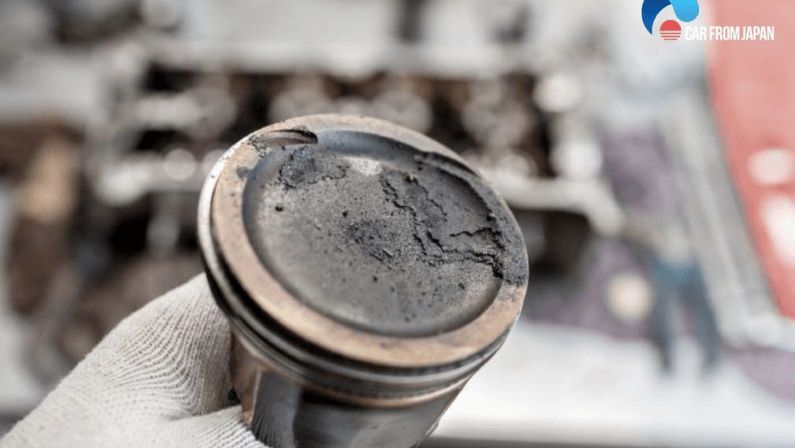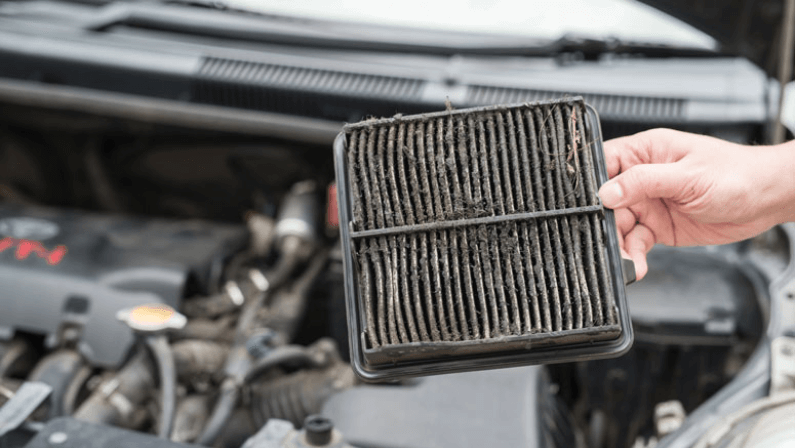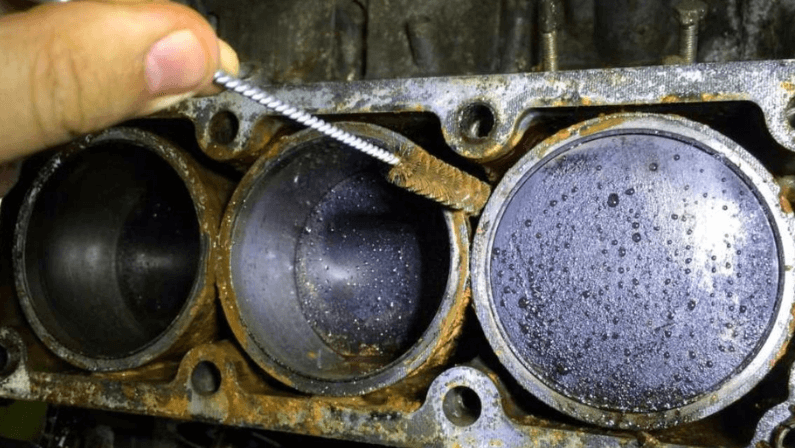Oil in the Intake Manifold: Possible Cause and Prevention
Posted on July 30, 2025

Your vehicle’s intake manifold plays a key role in keeping the engine running smoothly. It helps deliver the right amount of air to the engine’s cylinders so that fuel combustion can happen efficiently.
But when oil makes its way into this system, it can throw off the air-fuel balance and lead to serious engine problems. Even small amounts of oil in the intake manifold can disrupt performance and indicate wear and tear inside the engine.
If you’ve noticed sluggish performance, smoke from the exhaust, or strange engine behavior, the oil in the intake manifold might be to blame. While it’s often a sign of an aging engine, it doesn’t always mean disaster, but it does call for attention.
In this post, we’ll break down the possible causes, symptoms of oil in intake manifold to look out for, and how you can prevent this issue from damaging your engine further. Let’s get into it!

How does the PCV System Works?
The PCV (Positive Crankcase Ventilation) system plays a key role in managing engine pressure and keeping harmful gases from building up inside the crankcase. As your engine runs, small amounts of combustion gases, called blowby, escape past the piston rings and enter the crankcase.
Without a proper way to vent these gases, pressure would build up and push oil through engine seals and gaskets. The PCV system solves this by safely recycling these vapors back into the engine to be burned off, helping reduce emissions and maintain pressure balance.
The system uses a PCV valve and a network of hoses to direct the blowby gases to either the intake manifold or the air intake tubing. The PCV valve controls the flow, allowing vapors to be pulled into the engine when vacuum pressure is present.
However, if the PCV system becomes clogged or fails, pressure can’t be regulated properly. This can cause oil mist or droplets to travel through the PCV hoses and into the intake manifold, leading to oil buildup and poor engine performance. In many cases, oil in the intake manifold is a clear sign of a faulty or aging PCV system.
What Causes Engine Oil in Intake Manifold?
Oil in the intake manifold is a sign that something in your engine system isn’t functioning as it should. Here are the most common reasons oil can end up where it doesn’t belong:

1. PCV Valve Blocked
A blocked Positive Crankcase Ventilation (PCV) valve can cause pressure to build up in the crankcase. This forces oil vapors into the intake manifold, leading to oil residue and potential engine performance issues.

2. Bad Piston Rings
Worn or damaged piston rings allow more blowby gases to escape into the crankcase. This increases internal pressure and pushes oil and vapors into the intake system.

3. Air Cleaner Filter Blockage
If your air filter is clogged, airflow becomes restricted. This can interfere with PCV system function and cause oil mist to be pulled into the intake manifold.
4. Clogged Oil Passage
Blocked oil passages prevent oil from circulating properly, which can lead to overheating and excessive pressure buildup. In turn, this may cause oil to find its way into the intake system.

5. Valve Seal Leak
Valve seals keep oil from entering the combustion chamber. If they wear out or crack, oil can leak down into the intake ports and eventually into the manifold.
6. Bad Fuel Injectors
Malfunctioning fuel injectors can disrupt the air-fuel mixture and lead to incomplete combustion. This may increase blowby and crankcase pressure, pushing oil into the intake system.
7. Tear Camshafts
Damaged or worn camshafts can affect valve timing and oil distribution. This may lead to oil being improperly directed into parts of the engine, including the intake manifold.
8. An Old Engine
As engines age, seals, rings, and other components wear down. Older engines are more prone to internal leaks and pressure problems that can cause oil to enter the intake manifold.
Addressing these issues early can help prevent major engine damage and keep your vehicle running smoothly.
How Serious is the Problem?
A small amount of oil in the intake manifold (like a light coating or film) is usually not a major concern and can be relatively normal, especially in older engines. However, if you notice a noticeable puddle of oil, that’s a more serious issue.
It often signals that the engine is experiencing significant wear, particularly in components like the piston rings, valve seals, or the PCV system. When left unchecked, this can lead to reduced performance, poor fuel efficiency, increased emissions, and long-term engine damage.
While the problem may not cause your engine to fail immediately, it is a warning sign that something deeper might be wrong. An aging engine that’s pushing oil into the intake manifold is likely due for repairs or part replacements.
It’s best to have a qualified mechanic inspect the engine to determine the cause and recommend the appropriate fix before things get worse. Regular maintenance and early diagnosis can help you avoid more expensive repairs down the road.

Symptoms of Oil in The Manifold
When oil enters the intake manifold, it can disrupt the normal operation of your engine. While a light coating of oil might go unnoticed, larger amounts can lead to noticeable symptoms that indicate something isn’t right.
Here are the most common signs to watch out for:
1. Erratic Idling
Oil in the intake manifold can interfere with the ideal fuel-air mixture, which is critical for smooth engine performance. When oil coats the intake valves or cylinder surfaces, it can cause misfires, rough idling, and even engine stalling. You may notice the engine shaking or fluctuating in RPMs when idling—these are often the first signs of trouble.
2. Smoke Coming from the Engine
If you see smoke coming from the exhaust or under the hood, oil in the intake manifold could be the cause. This typically happens when oil bypasses the piston rings and enters the crankcase, where it can be drawn into the intake manifold by engine vacuum.
Once the oil reaches the combustion chamber, it burns with fuel, creating thick, dark smoke. This can also lead to overheating and increased engine pressure—both of which need immediate attention.
3. Reduction in Fuel Efficiency
Oil buildup in the intake system can cause sticky intake valves and deposits in the combustion chamber. These blockages lead to inefficient burning of fuel, meaning your engine has to work harder and use more gas.
Oil-fouled spark plugs can also fail to ignite the fuel mixture properly, further decreasing mileage. If your fuel economy suddenly drops, oil in the manifold might be part of the problem.
4. Decrease in Engine Power
Oil can block airflow and reduce the combustion quality needed for engine power. You may notice a sluggish response when accelerating or feel like your engine is struggling to deliver its usual performance.
This reduction in power is often a sign that the intake manifold, and possibly other engine components—are coated in oil and not operating at their best.
How To Prevent Oil in the Intake Manifold?
Preventing oil from entering your intake manifold is all about regular maintenance and a few smart upgrades. Here are some key steps to keep your engine running clean and efficient:

1. Change Your Engine Oil Regularly
Dirty or old engine oil can thicken, clog vital oil passages, and increase the chances of oil leaking into areas it doesn’t belong—like the intake manifold.
Following your vehicle’s recommended oil change schedule, typically every 5,000 to 7,000 miles, helps keep the engine properly lubricated and reduces internal pressure that can force oil into the intake system.
2. Clean Your Air Filter as Recommended
A clean air filter keeps dust and debris out of your engine—but if it’s clogged or over-oiled (especially in the case of reusable filters), it can actually cause airflow issues and send excess oil vapor into the intake.
Follow your air filter's cleaning instructions carefully and consider switching to a paper air filter if you want to avoid over-oiling altogether.

3. Install an Oil Catch Can
If your vehicle struggles with oily blowby gases, even a working PCV system might not be enough. An oil catch can is a simple add-on that traps excess oil vapors before they can reach the intake manifold.
While it needs to be emptied regularly, it’s a great way to keep your intake system cleaner, especially in high-performance or older engines prone to blowby.

When To Get Intake Manifold Repair
While intake manifolds are built to last the life of your engine, issues can still pop up earlier, especially with the gaskets that seal the manifold. Over time, heat and pressure can wear down these parts, leading to leaks or performance problems.
If you notice strange noises from the engine, rough running, a check engine light, or dark smoke from the exhaust, it could be a sign that your intake manifold needs attention. These symptoms may point to a damaged gasket or a buildup of oil inside the manifold.
When in doubt, it’s always a good idea to have a mechanic inspect your vehicle to catch any problems early and avoid more serious engine damage.
Visit CarHub Caledon Chrysler for Intake System Inspections and Maintenance
Oil in the intake manifold might start as a small issue, but it can lead to bigger problems if ignored. From clogged PCV systems to worn-out engine parts, there are several causes—but with regular maintenance and the right preventive steps, you can keep your engine running smoothly.
Not sure what’s going on under the hood? CarHub Caledon Chrysler offers Peace of Mind Vehicle Inspection Services to help spot issues before they become serious.
Our expert technicians can check for signs of oil buildup and ensure your engine is performing at its best. Book your inspection today and drive with confidence!
